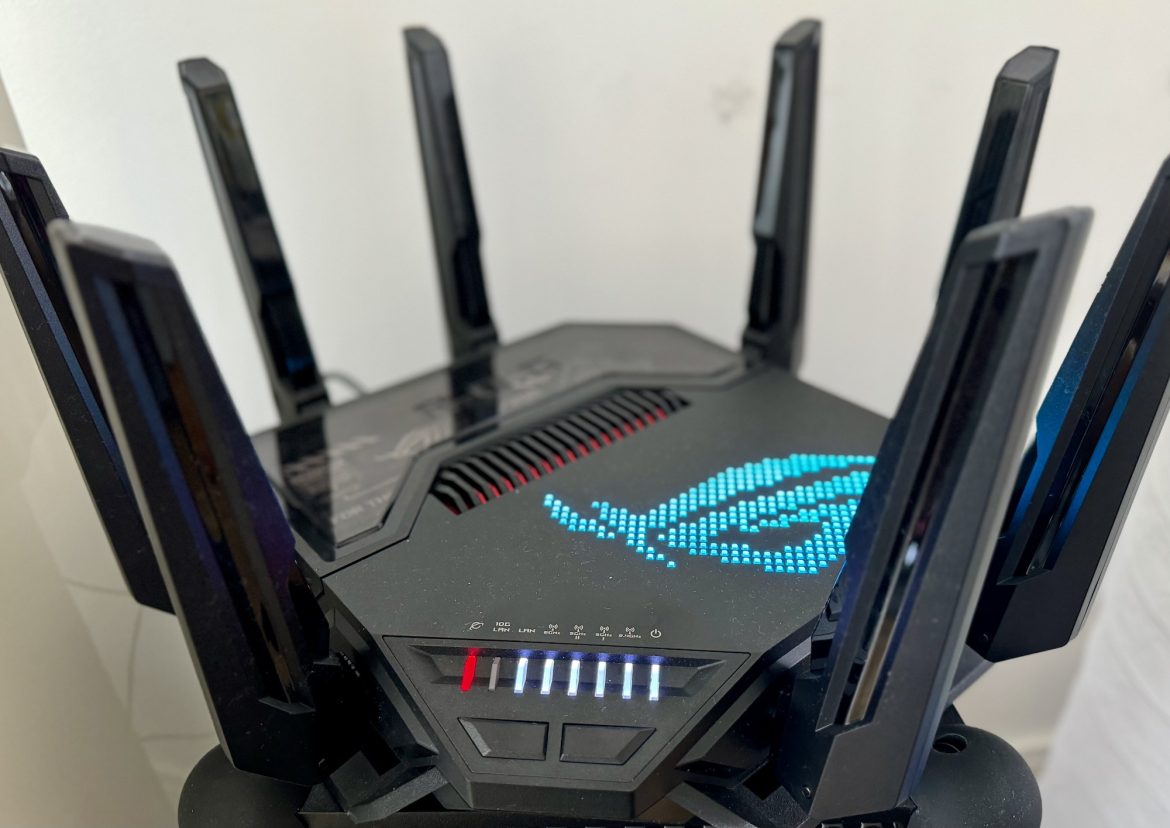TL;DR
Asus's GT-BE98 is a beast of a WiFi 7 router, packed with features for serious gamers and tech enthusiasts. It boasts incredible speeds and low latency, a robust build, and an interface that's a dream for power users. While its aggressive design and premium price tag might not be for everyone, and initial setup can be tricky (a reported software bug), its overall performance and forward-thinking WiFi 7 capabilities make it a top contender. If you're looking for bleeding-edge networking and future-proofing, this router might just be your new benchmark. Want the full breakdown on this networking powerhouse? Dive into the complete review!
Taiwanese Asus has frequently been at the forefront of innovation, delivering new features and strong technical performance across its extensive product range. We at senses have often used their routers as benchmarks, notably during the RT-68 era. They’ve now advanced further in networking with the GT-BE98, a feature-rich WiFi 7 router designed to deliver high speed and top-tier performance for today’s tech enthusiasts, particularly gamers. The crucial question is whether its real-world performance justifies the premium price.
Design and Build Quality
The Asus GT-BE98 is marketed as a “WiFi monster,” and its design is certainly assertive. Its substantial size, blocky form, and eight prominent antennas give it a distinctive appearance. The bright red ROG logo adds to the visual impact. Placed alongside our previous reference router, the stylish Netgear Nighthawk AX12 RAX 120, the GT-BE98’s dimensions, while considerable, aren’t dramatically larger.
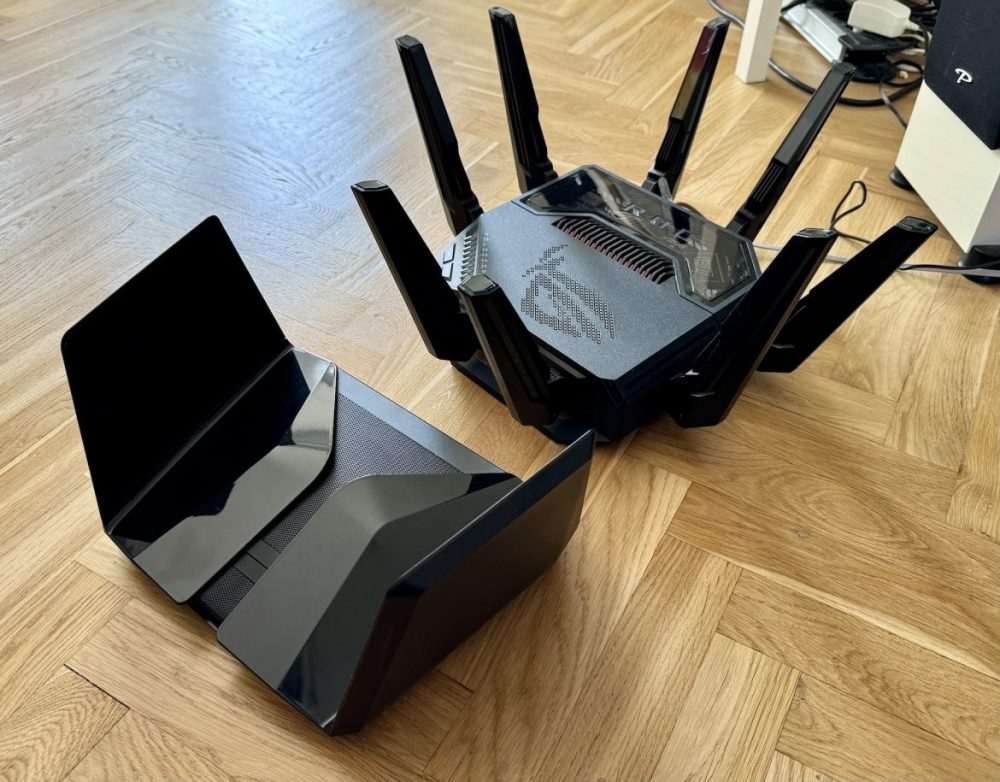
While aesthetics are subjective, the GT-BE98 exhibits a solid build quality. Its robust construction inspires confidence in its internal components and its ability to maintain optimal cooling without excessive fan noise. The LED lighting, while potentially appealing to gamers, can be disabled for a more understated look.
Installation and user-friendliness GT-BE98
The initial setup proved challenging. Despite extensive experience with router configuration, we encountered issues obtaining LAN IPs and accessing the user interface. The router reported DHCP issues with our ISP. After consulting Asus support and ultimately replacing the unit (which exhibited the same problem), we discovered a workaround: initiating the setup process without any network cables connected. This unusual issue appears to stem from a software conflict, potentially related to the router incorrectly allowing the ISP’s DHCP to override its own NAT. This problem has been reported by other users on the SNB forum, as documented here and here. This warrants attention from Asus’ software team. While we cannot confirm that this issue affects all Asus routers or Telia fiber connections, it clearly exists in certain configurations. Had we been typical consumers, a return might have been the next step.
Following this initial hurdle, the router functioned as expected, particularly after connecting the fiber cable to a port differing from that indicated in the manual and completing the initial configuration via the router’s interface.
The Asus GT-BE98’s user interface is comprehensive and well-suited for users seeking granular control over network settings for various applications, including home networking, streaming, and gaming. The router offers pre-configured profiles for popular games. We observed consistently low ping times, minimizing latency in online gaming. Setting up encrypted DNS for enhanced privacy is straightforward, and the router restarts rapidly when settings are saved. The interface is responsive and facilitates experimentation with different configurations.
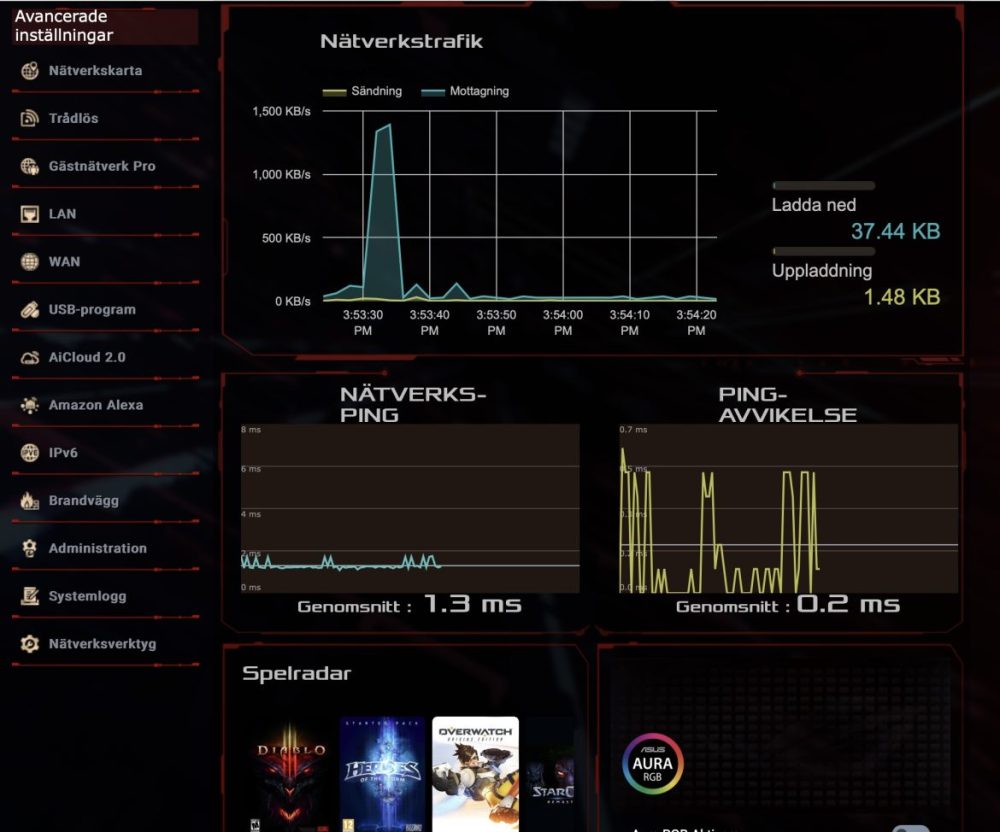
For advanced users, consulting the detailed manual is recommended to fully leverage the router’s extensive configuration options. A strong understanding of networking concepts and terminology is beneficial for maximizing the GT-BE98’s potential.
Parental controls and security settings are easily accessible and configurable. Separate, curated networks can be established for children, incorporating DNS filters to restrict access to inappropriate content. Dedicated IoT networks can also be created, limiting access to basic internet connectivity for enhanced security. This is a prudent measure given the prevalence of smart devices originating from various sources. Note that DNS encryption or services like Apple Private Relay will override the router’s built-in DNS restrictions.
AI on a router?
While “AI” is a prominent marketing term, the GT-BE98’s “AI” features are more accurately described as intelligent functions. AiCloud enables remote access to files stored on a hard drive connected to the router, providing an alternative to cloud storage services. AiMesh facilitates the creation of a mesh network using compatible Asus routers, potentially incurring additional costs due to vendor lock-in. AiProtection, powered by Trend Micro, offers virus protection and security recommendations. Asus is commended for including this software without recurring subscription fees. AiDisk allows users to establish their own FTP server and VPN tunnel.
GT-BE98 – Performance
The Asus GT-BE98 delivers exceptional overall performance. Ping times are minimal, and the router efficiently handles multiple concurrent streams. QoS (Quality of Service) functionality allows for traffic prioritization, although we observed improved performance with QoS disabled in certain scenarios. A key feature is its support for WiFi 7 technology, promising theoretical speeds of up to 5.8GB/s on the 6 GHz band, along with enhanced bandwidth and multi-device handling capabilities (MU-MIMO, theoretically supporting 16 streams, although often limited by device capabilities). However, practical testing of WiFi 7’s full potential remains challenging due to limited device support. Even flagship mobile devices like the iPhone 15 Pro Max, equipped with WiFi 6E, cannot fully utilize the GT-BE98’s capabilities. While WiFi 7 offers limited immediate benefits, it represents a forward-looking investment that provides excellent current performance with the potential for future enhancements.
Handling of multiple devices
The GT-BE98 supports OFDMA and MU-MIMO technologies, although the precise number of supported devices is not specified by Asus. Based on our assessment, we estimate 8×8 MU-MIMO, potentially exceeding competitors in the same segment who often offer 4×4. While this is half of the WiFi 7 standard’s theoretical capacity, it is ample for current usage scenarios.
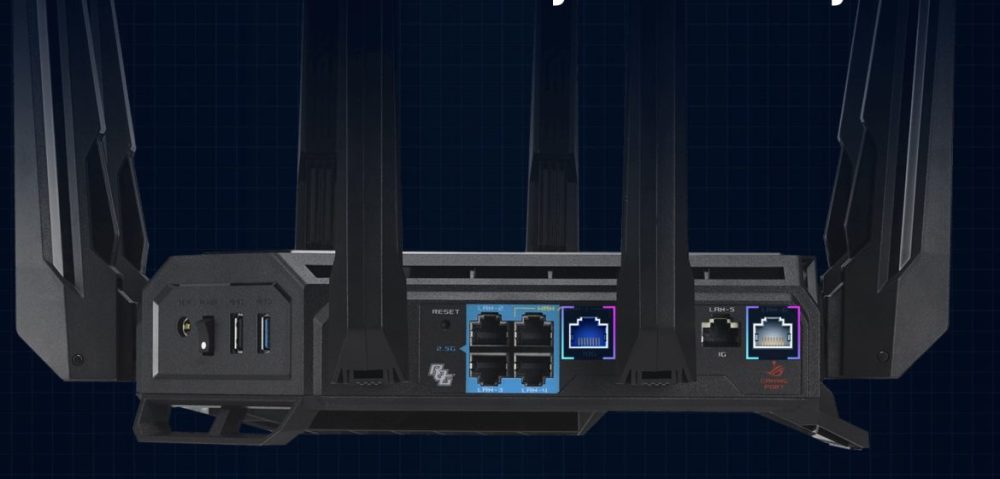
For users prioritizing network redundancy, the Asus GT-BE98 supports backup WAN connections, allowing for the integration of multiple internet sources (e.g., a mobile router) and the distribution of their capacity based on specific requirements and uptime considerations.
Range and Stability GT-BE98
Signal strength is a common area where older routers may exhibit limitations. While older WiFi standards are not inherently inferior, devices supporting high-speed transmission often demand more robust signal strength. In our approximately 80 square meter office with concrete walls, the GT-BE98 provided “good” to “decent” signal penetration, experiencing minor signal degradation only at the furthest point, through a wall and a door (using WiFi 6). The signal strength was marginally superior to the Nighthawk, resulting in overall faster and more reliable performance.
Is the GT-BE98 worth the money?
The Asus GT-BE98 is priced around 10,000 Swedish kronor at the time of this review, placing it in the premium router category, which is justifiable given its advanced features, technology, and performance. It is positioned slightly below Netgear’s Wifi 7 model RS700S, which we will review separately. While expensive, it represents a reasonable investment for users seeking cutting-edge technology and a degree of future-proofing.
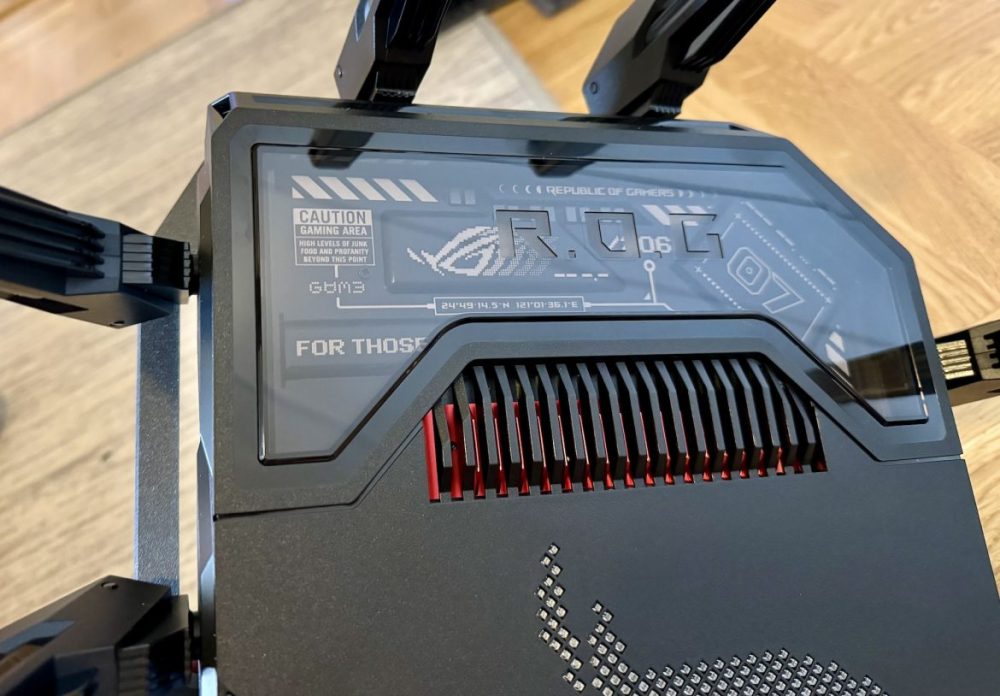
Summary
The primary drawbacks of the Asus GT-BE98 are the initial installation difficulties, its polarizing design, and its high price. Its strengths are numerous: excellent performance, a wealth of settings and features, and a user-friendly interface. WiFi 7 support provides long-term potential, even if its immediate benefits are limited. While overkill for the average user, the GT-BE98 is well-suited for serious gamers and technology enthusiasts who require the latest advancements (we anticipate software updates to address the initial setup issue).
The Asus GT-BE98 now serves as our new reference router.
Asus provided review samples for this test. The provision of materials does not influence our editorial independence. Our reviews are conducted independently and with the interests of our readers and consumers as our primary focus.
